Homo sapien molar tooth discovered just a few miles from Madrid
TRANSLATION MINE (w/o automation, literary translation style. See below).
From ElMundo, Gran Madrid,
El primer madrileño de la Historia: un fósil de un diente confirma la presencia humana en el Valle del Lozoya hace 400.000 años
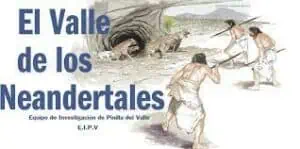 Jesús Masa se despertó, se vistió, desayunó y puso rumbo a su trabajo, no sospechaba que ese día iba a cambiarle la vida. Como llevaba haciendo desde hacía dos semanas, al llegar a la localidad madrileña de Pinilla del Valle, fue directo al Valle de los Neandertales para trabajar en la campaña de excavaciones, que este año se ha puesto en marcha por vigésimo segundo año consecutivo.
Jesús Masa se despertó, se vistió, desayunó y puso rumbo a su trabajo, no sospechaba que ese día iba a cambiarle la vida. Como llevaba haciendo desde hacía dos semanas, al llegar a la localidad madrileña de Pinilla del Valle, fue directo al Valle de los Neandertales para trabajar en la campaña de excavaciones, que este año se ha puesto en marcha por vigésimo segundo año consecutivo.
Translation: On August 29, Jesus Masa woke up, got dressed, had breakfast and quickly went to his job, not suspecting that this day would change his life… for two weeks he’d arrive at the locality Pinilla del Valle [known] as the Valley of Neanderthals to work in the campaign for excavations that have been going on for two years.
Note – Pinilla del Valle is called the Valley of Neanderthals, because previously Neanderthal bones were discovered there, along with Bovine “trophies.” Apparently the Neanderthals were using cattle skulls to decorate their caves. (Photo credit – Roberto at Nutcracker Man).
Jesus was “excavating” on one of the lower levels at Cueva Des-Cubierta. “All of a sudden something caught his attention.” He dug a little deeper and “out of the dirt” came a tooth. He immediately showed it to “Israel Jiménez, y este a Enrique Baquedano, uno de los promotores de la excavación.” They called Spain’s legendary paleo-anthropologist in Madrid Juan Luis Arsuaga.
Continuing:
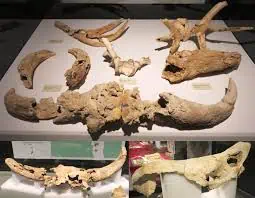 Una hora después, Baquedano confirmó sus sospechas, después de enviarle una foto del fósil al catedrático en Paleontología, Juan Luis Arsuaga, también responsable de la campaña. Habían descubierto un diente humano de más de 400.000 años.
Una hora después, Baquedano confirmó sus sospechas, después de enviarle una foto del fósil al catedrático en Paleontología, Juan Luis Arsuaga, también responsable de la campaña. Habían descubierto un diente humano de más de 400.000 años.
Translation: An hour later… Asuaga, who is responsible for the campaign… confirmed that the “human tooth of more than 400,000 years.”
Note – a photo of the tooth can be seen at the link above for El Mundo.
Roberto Sáez is an award winning paleo-anthropologist from Madrid. He is regarded as one of the top five evolutionary scientists in Spain.
He is also a close friend and colleague of Maria Martinon-Torres, and also works with Jose Bermudez de Castro. Regular readers of this site are quite familiar with Maria and Jose.
From his Bio:
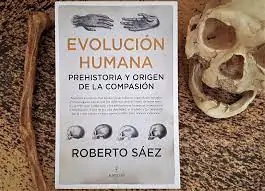 Roberto Sáez. Ingeniero industrial, antropólogo y divulgador científico experto en evolución humana. Miembro de la European Society for the study of Human Evolution (ESHE), cofundador de la asociación Club de Ciencia Boadilla y miembro de la Asociación Española de Comunicación Científica.
Roberto Sáez. Ingeniero industrial, antropólogo y divulgador científico experto en evolución humana. Miembro de la European Society for the study of Human Evolution (ESHE), cofundador de la asociación Club de Ciencia Boadilla y miembro de la Asociación Española de Comunicación Científica.
Además de este blog, soy autor del libro «Evolución humana: Prehistoria y origen de la compasión» (2019, editorial Almuzara), tengo otras contribuciones en libros sobre prehistoria, en artículos científicos y revistas, he impartido decenas de conferencias y talleres formativos en distintas entidades públicas y privadas, y he colaborado con programas de radio, podcast, TV y cursos online. Mi historial de trabajos y colaboraciones lo puedes consultar aquí, y me puedes encontrar en twitter: Follow @robertosaezm
Summary: Roberto is a professor of evolutionary science at the Industrial Engineering university. He is a member of various organizations for evolutionary science in Spain. He is the author of “Human Evolution: Prehistory and the Origin of Compassion.” He has appeared on various broadcasts and has been published in numerous publications on subjects related to evolutionary science.
Of course, Roberto also has a popular blog Nutcracker Man named in honor of Zijanthropus Bosei (Paranthropus Bosei) discovered by Mary Leakey in 1959.
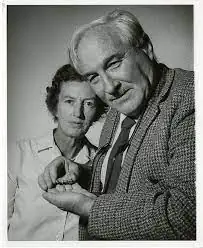 En 1959 Mary y Louis Leakey descubrieron en la Garganta de Olduvai (Tanzania) uno de los homininos más famosos, el fósil OH 5, de hace 1,75 millones de años. A partir de él definieron una nueva especie Zinjanthropus boisei, años después Paranthropus boisei.
En 1959 Mary y Louis Leakey descubrieron en la Garganta de Olduvai (Tanzania) uno de los homininos más famosos, el fósil OH 5, de hace 1,75 millones de años. A partir de él definieron una nueva especie Zinjanthropus boisei, años después Paranthropus boisei.
Translation: In 1959 Mary and Louis Leakey discovered in the Olduvai Gorge (Tanzania) one of the hominins most famous, the fosil OH 5, of up to 1,75 million years. It was defined as a new species Zijanthropus Boisei, years later (called) Paranthropus Boisei.
Sidenote: “Boisei” was the name of the Leakey’s financial benefactor. They named Zinj in his honor.
This morning Roberto Tweeted (X) out the announcement of the find.
¡Enorme hallazgo! Otro fósil de más de 400.000 años en la península ibérica. Cueva Des-Cubierta, Pinilla del Valle (Madrid). Molar muy desgastado, parece individuo de edad avanzada. Probablemente preneandertal.
Translation: Enormous find! A fosil of more than 400,000 years in the peninsula Ibertica. Cave of Covers near the Pinilla de Valle in Madrid. A worn molar, seems like an individual of advanced age. Probably pre-Neanderthal.
I queried Roberto, asking him if he believed it to be Homo Heidelbergensis, since he noted it was “pre-Neanderthal.”
He directed me to his article, “A moment of silence for the death of Heidelbergensis.”
He also made a point to steer me away from Homo antecessor:
No, antecessor is much older and comes from Gran Dolina not from Sima.
“They were archaic Homo sapiens, fossils dated to between 600 Ka and 200 Ka.
 In the meantime, the name Homo heidelbergensis remained with no further assignment to any other fossil for seven decades, until it was resurrected to try to classify a group of 20+ specimens of the Middle Pleistocene from dispersed sites in Europe (Arago in France, Petralona in Greece…), Africa (Kabwe in Zambia, Bodo in Ethiopia…) and Asia (Yunxian and Dali in China…). They all had in common some derived features from Homo erectus, basically a larger brain which reflects in complex tools (e.g. the wooden spear fron Schöningen, Germany).
In the meantime, the name Homo heidelbergensis remained with no further assignment to any other fossil for seven decades, until it was resurrected to try to classify a group of 20+ specimens of the Middle Pleistocene from dispersed sites in Europe (Arago in France, Petralona in Greece…), Africa (Kabwe in Zambia, Bodo in Ethiopia…) and Asia (Yunxian and Dali in China…). They all had in common some derived features from Homo erectus, basically a larger brain which reflects in complex tools (e.g. the wooden spear fron Schöningen, Germany).
They were ‘archaic Homo sapiens’, fossils dated to between 600 Ka and 200 Ka just before the Homo sapiens appeared in Africa
Roberto, (I am assuming) was directing me to this key sentence in the piece, “They were archaic Homo sapiens, fossils dated to between 600 Ka and 200 Ka.”
Again, the molar tooth just discovered is dated at 400,000 years ago, right in the middle of that time period. The tooth comes from an archaic Homo sapien, not a Neanderthal, not Heidelbergensis, nor Homo antecessor.
Which would serve as further evidence of separate origins for Europeans on the European continent, from the Africans. Out of Africa proponents have been saying for 4 decades that the first humans left Africa 50,000 years ago.
Editor’s note – I have 25 years of fluency in Mexican Spanish. I have visited 11 provinces in Mexico from Baja to Vera Cruz. Also, Puerto Rico and Spain multiple times.
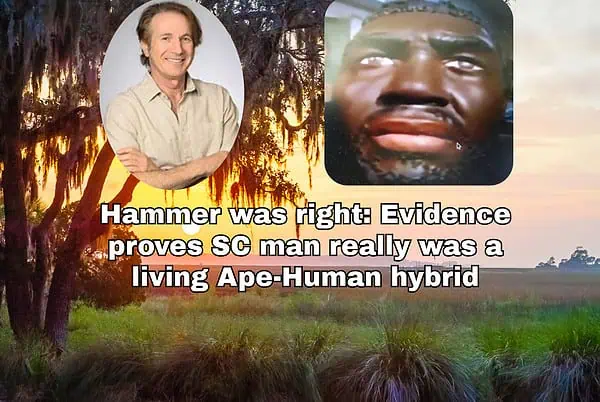

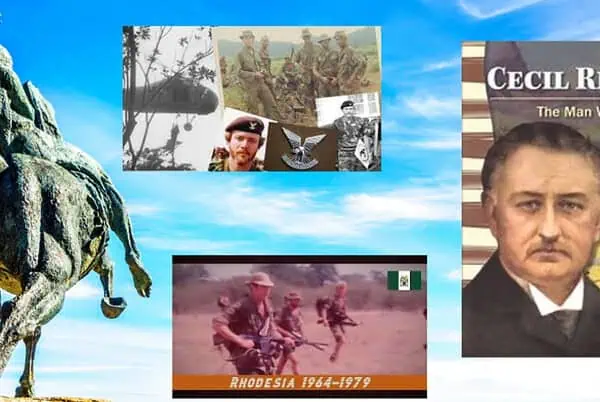
I have to see more to evaluate whether this could be an early sapiens predecessor.
But I will say this: It has always looked to me like Homo heidelbergensis/rhodesiensis was a better morphological fit for a Denisovan predecessor than for Homo sapiens.